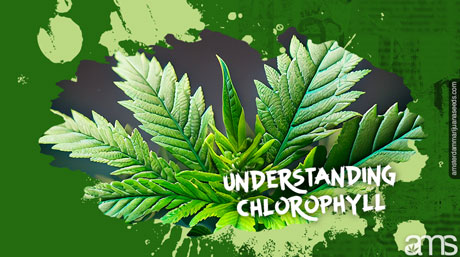Unveiling the Secrets of Chlorophyll: The Lifeblood of Plants
Step into the enchanting realm of cannabis leaves, where the splendor of nature and the marvels of science intertwine. In this comprehensive exploration, we embark on a captivating journey, immersing ourselves in the kaleidoscope of vibrant green hues that grace cannabis leaves—the result of the primary pigment that reigns supreme: chlorophyll. Together, let us unravel the mysteries of chlorophyll and discover its indispensable contribution to the flourishing growth and development of cannabis plants. Prepare to be amazed as we unveil the hidden wonders concealed within each chlorophyll-laden leaf, a testament to nature’s genius.
Understanding Chlorophyll and its Significance
Immerse yourself in the captivating essence of chlorophyll, the vibrant life force that breathes vitality into plants. Within the intricate molecular dance of this complex compound lies the very essence of photosynthesis. Absorbing the sun’s radiant energy, chlorophyll becomes the catalyst that transforms light into the life-sustaining nourishment that fuels the growth and resilience of the cannabis plant. It is within the depths of its cellular structures that we find the secret to the lush green hues that signify the pinnacle of health in cannabis leaves—a testament to the abundant presence of chlorophyll, the verdant guardian of life.

Photosynthesis: Unveiling Nature’s Alchemy
Photosynthesis, the life-giving process of plants, is a fascinating marvel that fuels their growth and sustains life on Earth. Within the chloroplasts, specialized organelles within plant cells, chlorophyll molecules act as nature’s solar panels, capturing photons of light. These captured photons initiate a cascade of intricate chemical reactions, leading to the synthesis of energy-rich molecules. Through a complex series of enzymatic steps, plants transform sunlight, water, and carbon dioxide into oxygen and glucose. These vital products serve as the building blocks for the plant’s growth, enabling the synthesis of sugars, starches, and a myriad of essential compounds. This remarkable feat of photosynthesis ensures the plant’s survival and creates a harmonious balance within our ecosystem.

The Shades of Green: A Visual Symphony
Cannabis leaves captivate with their diverse spectrum of green shades, ranging from vibrant lime green to deep forest green. This captivating visual symphony is influenced by a multitude of factors, including the plant’s genetics, environmental conditions, and growth stage. As the cannabis plant evolves from a tender seedling to a fully matured flowering specimen, the chlorophyll content within the leaves fluctuates, creating an ever-changing palette of green hues. These variations in color provide a window into the plant’s health and vitality, offering growers insights into its growth and nutritional needs. Observing and understanding the dynamic interplay of green shades in cannabis leaves allows cultivators to fine-tune their cultivation practices, ensuring optimal conditions for vibrant, thriving plants.
The Role of Light: Nurturing the Green Symphony
Light, the primary source of energy for plants, profoundly influences the development and expression of chlorophyll in cannabis leaves. Through the process of photosynthesis, chlorophyll harnesses the power of light, converting it into chemical energy that fuels the growth and survival of the plant. However, it’s not just any light that impacts chlorophyll synthesis and photosynthetic efficiency. Different wavelengths of light, particularly those within the blue and red spectrum, play specific roles in stimulating chlorophyll production and optimizing photosynthetic performance. By understanding the intricate interplay between light and chlorophyll, growers can fine-tune their cultivation conditions, providing the optimal light spectrum to enhance the health, vigor, and productivity of their cannabis plants. From adjusting the light intensity to manipulating light cycles, harnessing the power of light is a key strategy for maximizing chlorophyll production and promoting the vibrant green symphony of healthy cannabis leaves.

Beyond Green: The Hidden Pigments
While chlorophyll takes center stage in defining the green color of cannabis leaves, other pigments coexist, adding subtle hues and fascinating accents. Carotenoids, responsible for the yellow and orange pigments, and anthocyanins, which create shades of purple and red, contribute to the kaleidoscope of colors observed in certain cannabis strains. These secondary pigments, often masked by the dominant chlorophyll, reveal their splendor during various stages of plant development and under specific environmental conditions.
Cannabis Leaf Green: A Symbolic Link to Human Culture and History
Throughout the ages, the deep green hues of cannabis leaves have forged a profound connection between humanity and the plant. Beyond its botanical significance, the vibrant foliage has emerged as a powerful symbol, representing the rich tapestry of human history, art, and spirituality. From its revered healing properties to its cultural significance, the green cannabis leaf stands as an emblem of the profound and diverse experiences associated with the plant. Whether admired for its natural beauty or cherished for its transformative effects, the leaf embodies the enduring bond between humans and cannabis.
Keep a green tree in your heart and perhaps the singing bird will come.
[Lois Lowry 1983]
Frequently Asked Questions
How does light affect the color of cannabis leaves?
Light plays a crucial role in influencing the color of cannabis leaves. Different wavelengths of light, particularly those within the blue and red spectrum, stimulate chlorophyll production and optimize photosynthetic performance. By providing the optimal light spectrum, growers can enhance chlorophyll production and promote vibrant green leaves.
What factors contribute to the variations in green shades of cannabis leaves?
The diverse spectrum of green shades in cannabis leaves is influenced by various factors, including genetics, environmental conditions, and the growth stage of the plant. As the cannabis plant develops, the chlorophyll content within the leaves fluctuates, resulting in an ever-changing palette of green hues. These variations provide insights into the plant’s health and nutritional needs.
What are the secondary pigments that contribute to the colors of cannabis leaves?
In addition to chlorophyll, other pigments coexist in cannabis leaves, adding subtle hues and accents. Carotenoids produce yellow and orange pigments, while anthocyanins create shades of purple and red. These secondary pigments reveal their splendor during different stages of plant development and under specific environmental conditions.
Disclaimer: This content is meant for educational purposes only. It has been compiled with research from external sources. it is not meant to substitute any medical or legal advice. Please see your local laws for the legality of cannabis use.



